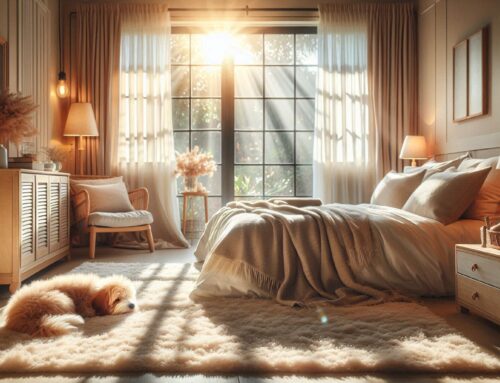Carpets are a cosy addition to any home but harbour more than just comfort beneath their fibres. Many homeowners overlook the importance of regular carpet cleaning, unaware of the potential health risks lurking in their plush flooring. To clean the carpets is not just about maintaining appearances; it’s a crucial step in safeguarding the well-being of everyone who walks on them.
This article illuminates the hidden dangers of neglected carpets and why cleaning them regularly is essential. It explores the health hazards concealed within carpet fibres, their effect on indoor air quality, and how proper maintenance protects your investment. The piece also compares professional cleaning services with do-it-yourself methods, providing readers with the knowledge to make informed decisions about their carpet care routine.
Health Hazards Lurking in Your Carpet
Carpets may appear clean on the surface, but they can harbour many hidden dangers that pose significant health risks. Even with regular vacuuming, carpets can become a breeding ground for various harmful substances that can impact the well-being of those living in the home.
Bacteria and Allergens
Carpets are repositories for indoor air pollutants, including dirt, dust particles, and allergens. These contaminants can build up over time, creating a potential health hazard. Studies have shown carpeted floors contain significantly more dust, proteins, and allergens than smooth floors. This accumulation can lead to respiratory issues, such as coughing or difficulty breathing, particularly for individuals with asthma who are more vulnerable to airborne toxins.
Mould and Mildew
Damp conditions in carpets can create an ideal mould and mildew growth environment. In a saturated carpet pad, these fungi can develop within 48 to 72 hours. The presence of mould can cause various health problems, including allergic reactions, respiratory illnesses, and, in severe cases, more serious health complications. The American College of Allergy, Asthma, & Immunology warns that mould irritants can build up in carpets, causing symptoms to flare up, especially after vacuuming.
Dust Mites and Other Pests
Dust mites thrive in the warm, humid environment provided by carpets. These microscopic creatures feed on dead skin cells shed by humans and pets. Their presence can trigger allergic reactions, causing sneezing, runny nose, and itchy eyes. Moreover, dust mites can exacerbate asthma symptoms, making it difficult for sufferers to manage their condition effectively. Other pests, such as fleas and bacteria, can also find a home in carpets, further contributing to potential health risks.
learn more: What to Clean Before Selling Your Property
The Impact on Indoor Air Quality
Carpets significantly influence indoor air quality, acting as repositories for various pollutants. These floor coverings can accumulate dust, allergens, and harmful chemicals, which can profoundly affect occupants’ health.
Respiratory Issues
Carpets harbour particulate matter (PM) that can be resuspended into the air through human activities. Smaller PMs have higher toxicity and can lead to respiratory symptoms, cardiovascular diseases, and even lung cancer. Generally, carpets resuspend more particles than hard floorings, with larger PMs being more easily dislodged. This resuspension can significantly impact indoor air quality, particularly for individuals with existing respiratory conditions.
Allergic Reactions
Studies have consistently shown that carpeted floors contain higher levels of dust and allergens than smooth or hard floors. These allergens can originate from fungi, pets, and house dust mites. When disturbed, these particles become airborne, potentially triggering allergic reactions in sensitive individuals. Symptoms may include itchy, watery eyes, sneezing, runny nose, and, in severe cases, asthma attacks. The removal of carpets has been shown to reduce allergen levels significantly.
Volatile Organic Compounds (VOCs)
Carpets can emit volatile organic compounds (VOCs), chemicals that quickly evaporate into the air. These emissions can come from the carpet materials themselves, as well as from carpet cushions and various household products. Exposure to VOCs can result in eye, nose, and throat irritation, headaches, difficulty breathing, and dizziness. Carpets also act as sorption sites, reducing peak concentrations of indoor VOCs but re-emitting them over prolonged periods, potentially prolonging exposure.
Protecting Your Investment
Carpets are a significant investment in any home, valued for their warmth, comfort, and aesthetic appeal. Proper maintenance is crucial to ensure they remain in top condition and serve their purpose for years to come. Regular upkeep not only prolongs the carpet’s lifespan but also maintains its visual appeal and preserves any warranty that may come with it.
Prolonging Carpet Lifespan
Regular vacuuming is essential to extend the life of carpets. This simple act removes surface dirt and prevents it from embedding in the fibres. For high-traffic areas, more frequent vacuuming may be necessary. Additionally, addressing spills and stains promptly can prevent lasting damage. Blotting the affected area gently with water or a mild detergent can often resolve the issue.
Placing doormats at entry points is an effective strategy for trapping dirt and moisture before they reach the carpet. Encouraging family members and guests to remove their shoes can also significantly reduce the amount of outdoor debris tracked onto the carpet.
Maintaining Aesthetic Appeal
Professional cleaning plays a vital role in maintaining a carpet’s appearance. While regular vacuuming removes surface dirt, deep professional cleaning can rejuvenate the fibres and restore the carpet’s original vibrant colours. This should be done at least once a year or more frequently in high-use areas.
Rotating furniture periodically helps distribute foot traffic and weight more evenly across the carpet, preventing uneven wear. Trimming loose fibres and snags can also prevent further damage and maintain the carpet’s overall appearance.
Preserving Warranty
Many carpet manufacturers stipulate professional cleaning as a requirement to maintain the warranty. It’s essential to check the specific terms and conditions, as the frequency of required professional cleaning can vary. To comply with warranty requirements, carpets should be professionally cleaned every 12 to 18 months.
By implementing these strategies, homeowners can protect their investment, ensuring their carpets remain clean, fresh, and in good condition for years.
Professional Cleaning vs DIY Methods
Deep Cleaning Techniques
Professional carpet cleaning services offer superior deep cleaning techniques compared to DIY methods. While vacuuming can remove surface dirt, it has limited suction power to extract deeply embedded particles. Professional cleaners use cutting-edge equipment to penetrate deep into carpet fibres, removing dirt, allergens, and stains that DIY methods often miss. This thorough cleaning improves the carpet’s appearance and creates a healthier living environment by eliminating dust mites, pollen, and other irritants that can trigger allergies and asthma.
Specialised Equipment
The equipment professional cleaners use is far more advanced than what’s available for home use. These industrial-grade machines provide more potent suction and more effective cleaning power. They can extract more moisture from carpets, leading to faster drying times and reducing the risk of mould or mildew growth. Additionally, professional cleaners can access high-quality, often eco-friendly cleaning solutions that are more effective at breaking down dirt and stains than typical household products.
Expert Knowledge
Professional cleaners possess the expertise to handle various carpet types and stains effectively. They can identify the best cleaning methods for different materials and tailor their approach to achieve optimal results while minimising the risk of damage. This knowledge is precious when dealing with stubborn stains or delicate carpets. Moreover, professionals understand the importance of proper drying techniques, often overlooked in DIY cleaning. Their methods ensure thorough moisture extraction, preventing potential issues like mould growth or carpet shrinkage.
FAQs
What are the risks associated with carpet cleaning chemicals?
Carpet cleaning chemicals, including alkaline agents in aerosol form like carpet pre-spray, can irritate the skin and mucous membranes. Solvents such as 2-butoxyethanol may cause skin irritation. Additionally, perfumes like pine scent and limonene, commonly used in carpet cleaning, can act as sensitizers, potentially causing allergic reactions.
Why is carpet cleaning necessary?
Regular carpet cleaning prevents the accumulation of allergens and bacteria, which can thrive in moist, dirty carpets. This promotes a healthier environment and significantly improves the look of any space. A clean and well-maintained carpet reflects the general cleanliness of a home or facility.
Why is it crucial to remove all chemical residues from carpets after cleaning?
Leaving moisture and sticky detergent residues in carpet fibres can lead to unpleasant odours and prompt quicker re-soiling. Moreover, if residues are not thoroughly removed, the brushes used during cleaning might damage the carpet.
What are the benefits of having your carpets cleaned by professionals?
Professional carpet cleaning helps to prevent the accumulation of allergens and bacteria, which can be particularly prevalent in moist and soiled carpets. Besides promoting a healthier living space, professional cleaning also enhances the visual appeal of any room, contributing to the overall cleanliness and ambience of a facility or home.


